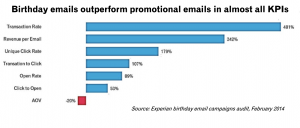
Customers Buying Journey
McKinsey&Co’s David Edelman and Marc Singer recently wrote about the world of consumer buying. We thought the overall conclusion also had relevance for the B2B market.
According to Edelman and Singer – “the traditional funnel model in which customers begin with a set number of brands in mind and then whittled them down until they decided what to buy—has been usurped by a customer decision journey model. This journey involves the buyer taking advantage of technology to evaluate products and services more actively, adding and removing choices over time. And it includes a feedback loop, where customers kept evaluating products and services after purchase, pressuring products to perform and brands to deliver a superior experience on an ongoing basis.”
What they conclude believe is worth exploring for both B2C and B2B sales: “Companies can not only react to customers as they make purchasing decisions but can also actively shape their decision journeys.”
In the B2B market if you can shape the buying process that becomes a significant competitive advantage. Let’s look at a few ideas for meeting this challenge.
1. Putting the buying process first. Too often sellers implement their selling process the same way regardless of the buyer. This can easily lead to misalignment. For example increasingly the buying process for many customers is non-linear whereas most selling processes are based on a linear framework.
A second common situation is the buyer is 20% through their buying process before they even contact the competitive selling organizations. If you begin on Step 1 and the buyer is already on Step 3 you are off to a bad start.
So as the first step in your sales process you ought to develop a comprehensive understanding of the buyer’s journey and where they are in that process. With that understanding at hand you have an opportunity to shape the decision process.
2. Shaping the Decision Criteria. For any major decision the customer will develop a set of decision criteria to decide between you and the competitors. You can help shape the formulation and utilization of those criteria.
The first step is determining the customer’s initial set of decision criteria and how you measure up against those criteria. Here it is important to remember the fit is a two-way street. You must determine in an objective fashion the degree of fit between the customer’s decision criteria and your capabilities. In addition, you must obtain the customer’s perception of that fit. It is often the case that the two assessments are not in alignment and a part of your shaping strategy is what to do about the misalignment.
For example, there are times when there is a misperception about one of your capabilities. A second example is when a customer deems a particular decision criterion to be extremely important and it is your experience that priority is misplaced.
The key is to be in a relationship with the customer where you are functioning as a trusted advisor so you can have an opportunity to reshape the decision criteria in way that helps the customer make a better decision and puts you in a better competitive position.
Edelman and Singer sum it up this way: Effectively navigating customer journeys requires the journeys to be treated like products that need to be actively managed, measured, and nurtured. The goal is to help the customer improve the effectiveness and efficiency of how they buy in a way that also improves your competitive position.
Business & Finance Articles on Business 2 Community(154)
Report Post







